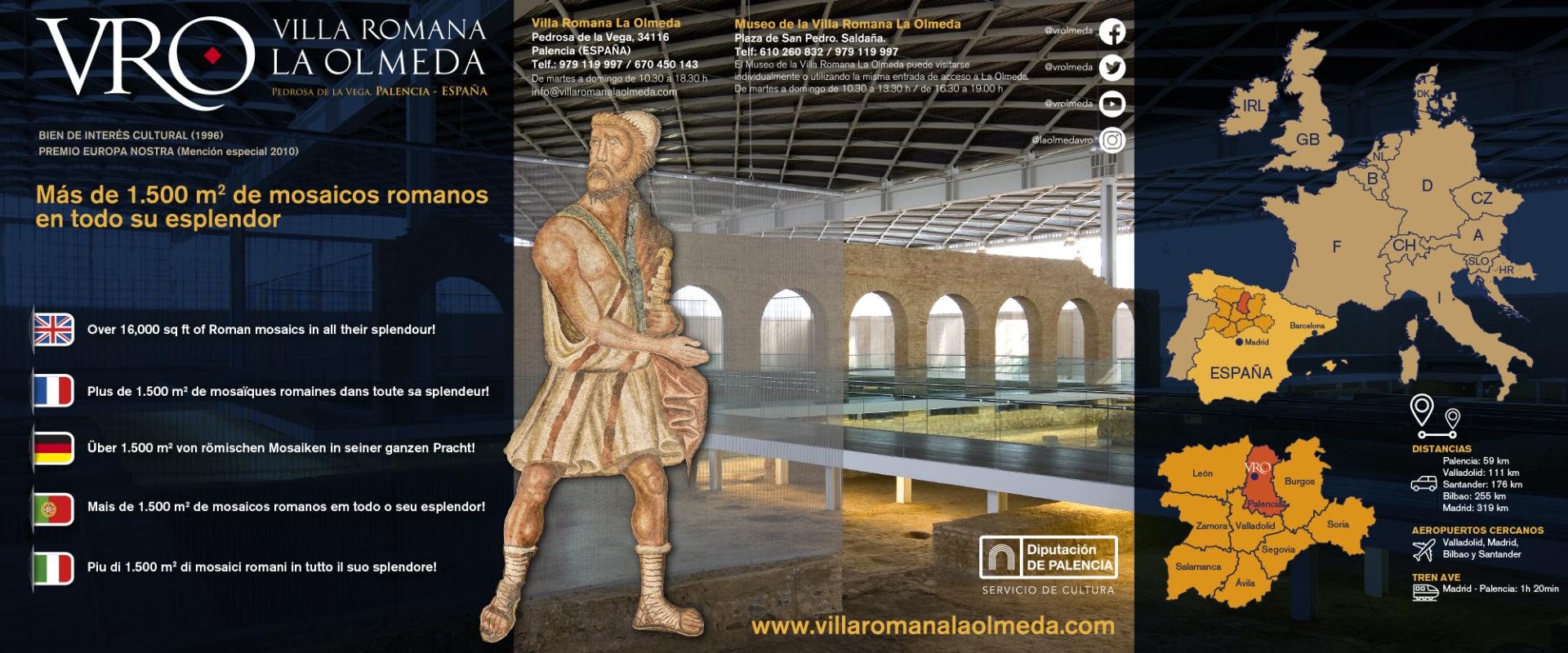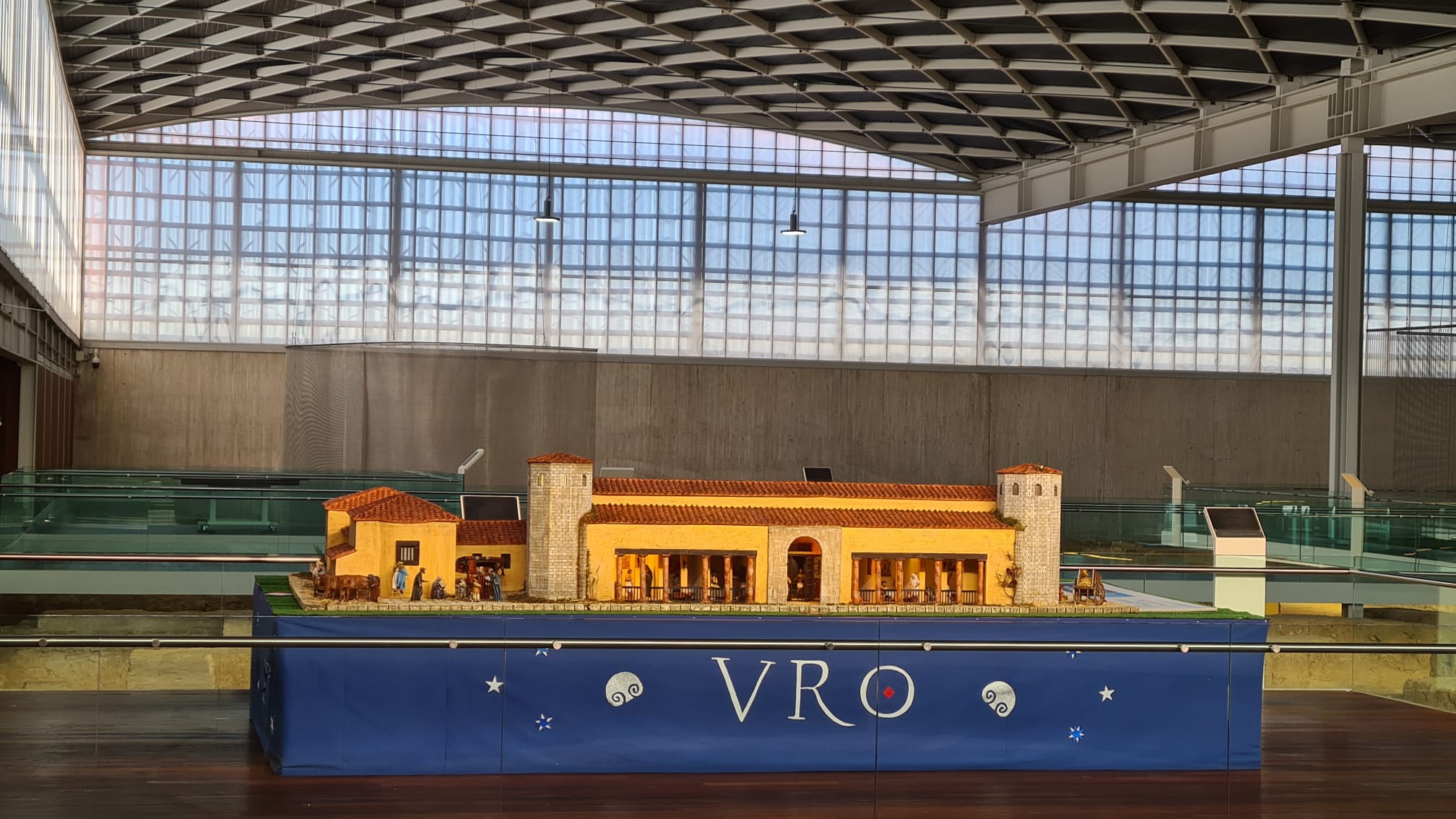
In December yoy have the chance to experience a Roman Nativity scene in La Olmeda. Visitors looking into the world of archeology will be able to approach one of the great discoveries of world archeology these days: the Roman Villa La Olmeda, discovered in 1968, which is located in Pedrosa de La Vega very close to the historic town of Saldaña. La Olmeda is a great Roman archaeological jewel, with approximately 1,500 square meters covered with beautiful mosaics of high historical value. Centuries ago, a splendid palace from the imperial era stood in this place that still preserves magnificent mosaics, worth visiting and admiring.
Information and schedules: The Roman Villa La Olmeda is open to the public from Tuesday to Sunday from 10:30 a.m. to 6:30 p.m. Exceptionally, it will also open to the public on Monday, December 4. Tuesdays from 3:00 p.m. Free entry per the Cultural Heritage Law of Castilla y León. For guided tours it is necessary to call 979 119 997 / 670 450 143 during public service hours.
Very close to the archaeological site, several necropolis was discovered with rich and varied funerary items, today exhibited in the monographic museum installed for this purpose in the Church of San Pedro de Saldaña. Without a doubt, it is the perfect complement to the visit to Olmeda and a mandatory stop to have an overview of this impressive archaeological complex. In addition, the ticket to visit the Roman villa is also valid to visit this museum. Like the site, La Olmeda museum opens exceptionally next Monday, December 4, from 10:30 a.m. to 2:00 p.m. and from 4:30 p.m. to 7:30 p.m.
As usual on these dates, the Provincial Council of Palencia in collaboration with the Association “San Francisco de Asís” offers in La Olmeda a Nativity Scene inspired by the residential palace of La Olmeda that faithfully represents the peristyle mansion from the 4th century AD. In this model, the roof on which 11,000 tiles have been used, the main portico where ancient trades have been represented and the retaining walls of the palace stand out, which will help to better understand the structure of the building. The late imperial palace is a magnificent backdrop background for the recreation of biblical themes such as Jesus among the doctors, the slaughter of the innocents, the dream of Saint Joseph or the registration of the Virgin and Saint Joseph. In addition, these scenes are mixed with others that represent daily life in the field and the representation of the typical trades of the time. In the 'oecus' or main hall of the mansion the Mystery of the Nativity is represented along with the Adoration of the Magi
